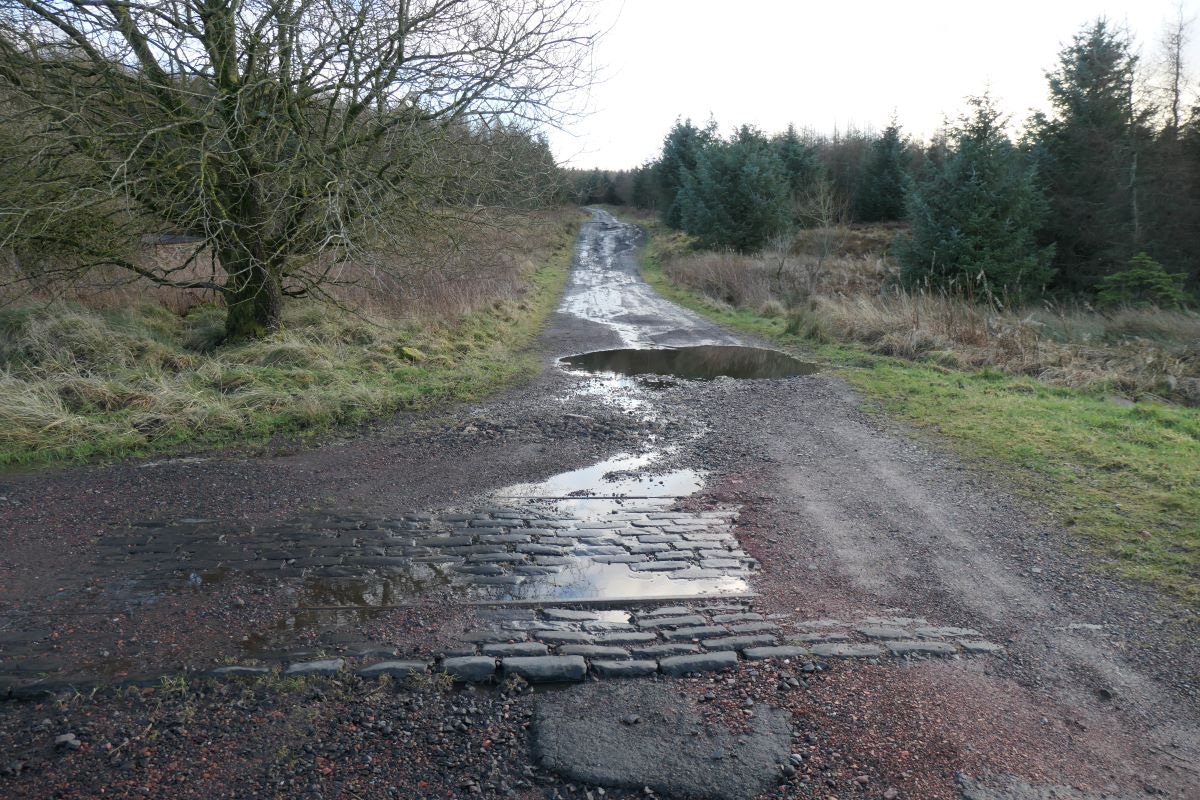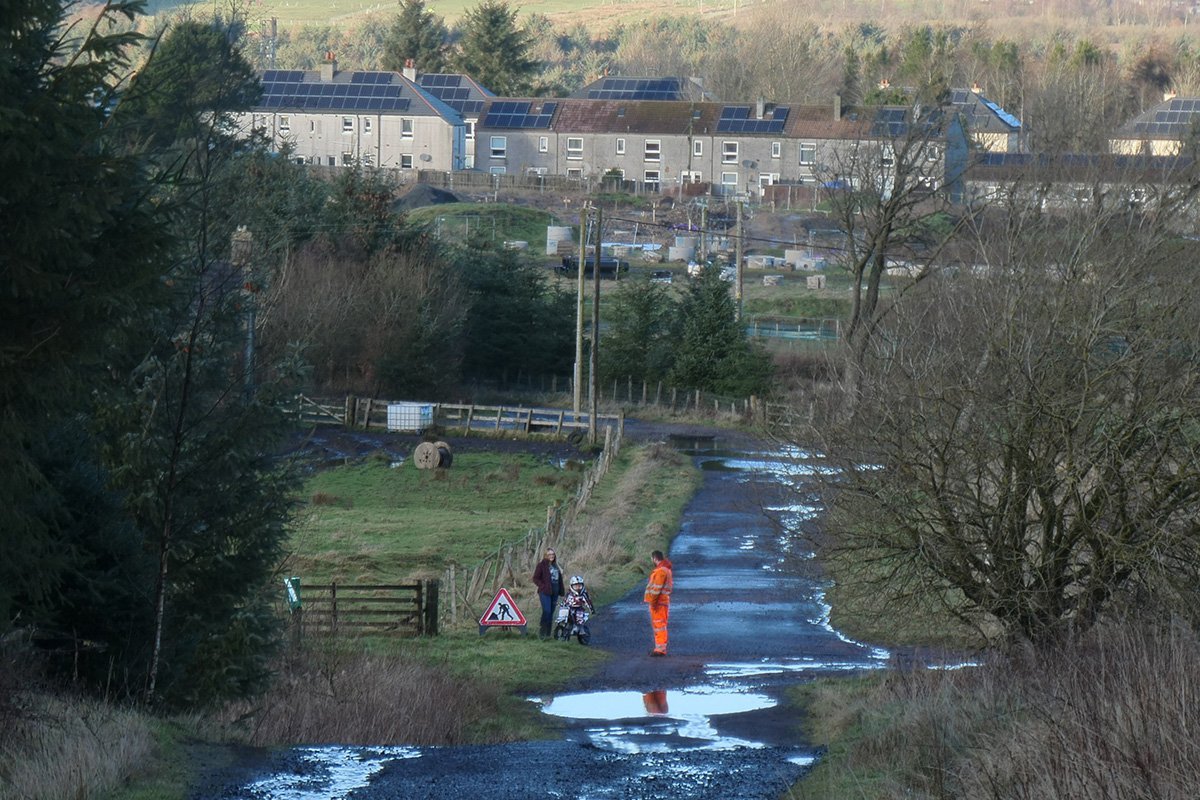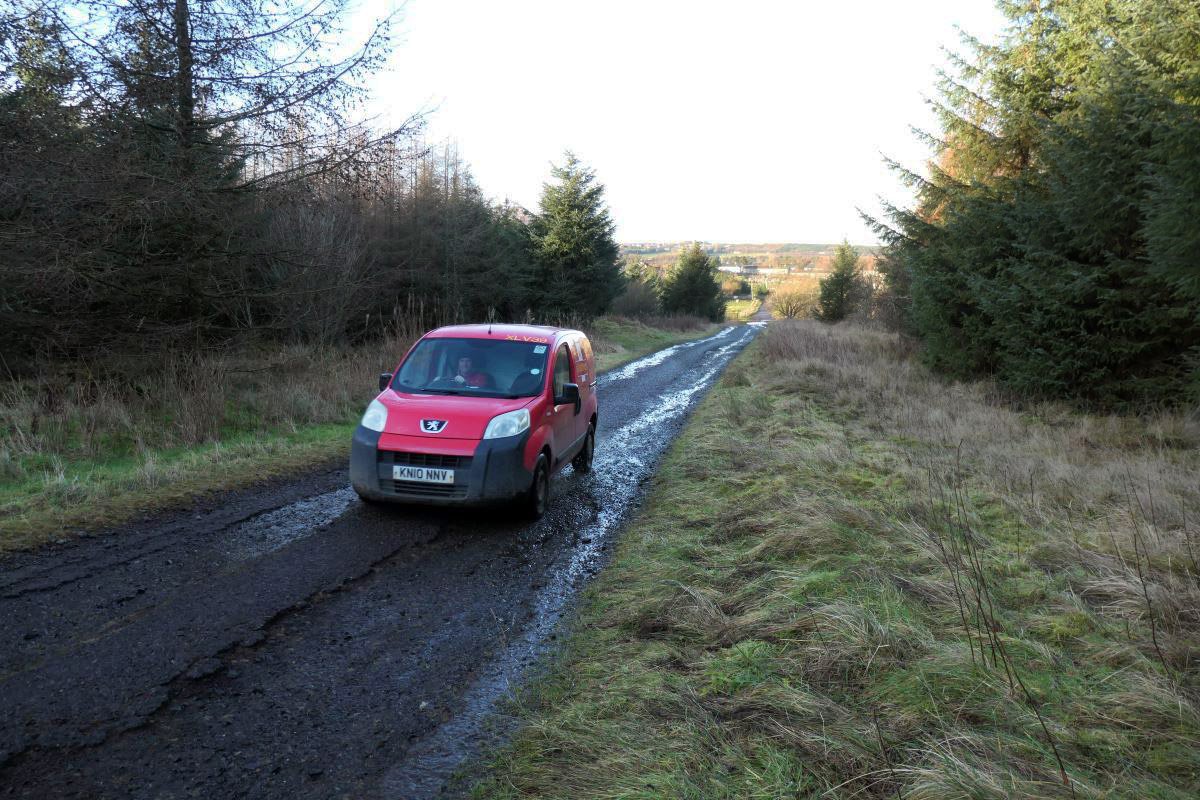Alternative Realities in Breich
A potholed road and some mind-expanding artwork

A road once linked the A71 at Briech with the A705 Lanark road at Blinkbonny. It's marked on road maps of not-too-long-ago in the reassuring yellow of a B-road; a route of some significance.
Most of Briech's most important buildings – the hall, the kirk, and the police station – lay either side of the Woodmuir road, which then continued southward between green fields towards Woodmuir farm. After passing over a railway level crossing, the road climbed steadily upwards through open moorland, enjoying ever-finer vistas westward as you gained height. Finally the Lanark road was reached at Blinkbonny – a spot whose name means “beautiful view”.
This would once have been a busy road, providing a vital link between the mining village of Blinkbonny and the miners rows that lay either side of the road close to Woodmuir farm. Both settlements were built by the Woodmuir Coal Company during the 1870's or 80's to house the workforce of pits and works spread out across the high moors. The company's mineral railway zig-zagged up the hillside to reach this industry. The 36 or-so homes huddled together at Blinkbonny formed a self-sufficient little community, served by a company school, a store and a recreation hall
Coal beneath the high moorland of Woodmuir was exhausted by the mid 1890's, and the company then looked eastward to work the coal buried deep beneath the surface of Nether Longford Moss. The company's new Woodmuir No.5 & 6 pits began production in 1896 and continued to win coal until 1963. The new village of Breich was created alongside the Ayr road to serve the new pit, while Blinkbonny and the other old rows grew increasingly dilapidated and were condemned in the 1930's.
Today, the Woodmuir road is neglected. After leaving the last of Briech's houses, the surface of the road becomes rough and eroded. Patches of tarmac remain, but in many places water has cut deep channels so that the route looks more like the bed of a burn than a public highway. A 4x4 now seems essential to reach the farm and other scattered cottages, yet the wee postie's van still finds its bumpy way along the full route, perhaps guided by instincts passed down from past generations of postal workers.
A conifer forest now forms a green canyon either side of the moorland road, which remains in constant shadow throughout the short days of January. Within this gloomy landscape there are remains of a mining past. At the roadside, and in clearings within the forest, there are traces of long abandoned shafts, appearing like giant mossy doughnuts. The footprint of miners houses can still be made out in fields close to Woodmuir farm while remarkably, rails remain embedded in the road surface at the level crossing. The coal company's little pug engine would have crossed the road here at the start of its arduous journey up the steep gradients of the zig-zag railway. Despite this historical interest, on a grey winters day, all impressions are of a dreich, lonely and miserable place.
Close to the level crossing, a winding path through the withered undergrowth leads to a tumbledown brick shed with a heavy concrete roof. It's a humble structure, that might once have housed a pump to serve colliery operations. A jagged hole in one of the walls offers a startling glimpse of brilliant fluorescent colour, which is in arresting contrast to the drab tones of the surrounding landscape. Climbing down into the chamber is rather like passing through a portal into an alternative reality. A moon painted on the ceiling illuminates all, while a fireplace and washing machine sketched out on the walls serves many practical needs. All other surfaces form a cacophony of brilliant colour and startling shapes that seem to describe places, creatures and sensations that are not of this world. Time spend in this wonderland amazes and astounds. When finally emerging from this immersion, you half expect that the world to have changed . It wouldn't be so much of a shock to find yourself in a Victorian land of steam and industry, or else propelled into an unimaginable jaw-dropping future
While such temporal shifts cannot be guaranteed, West Lothian can now be proud it own Sistine Chapel, which certainly ranks as one of the Seven Wonders of Briech.
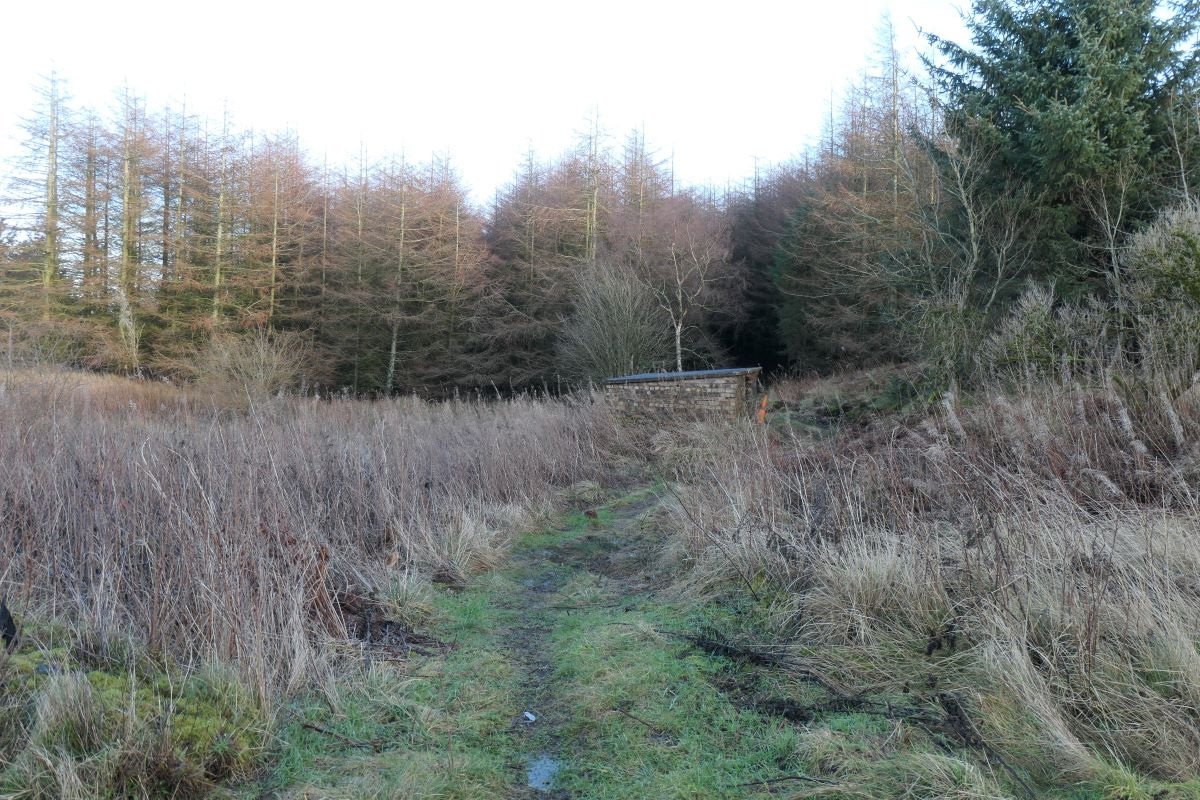
The magic shed, 8th January 2023

The magic shed, 8th January 2023
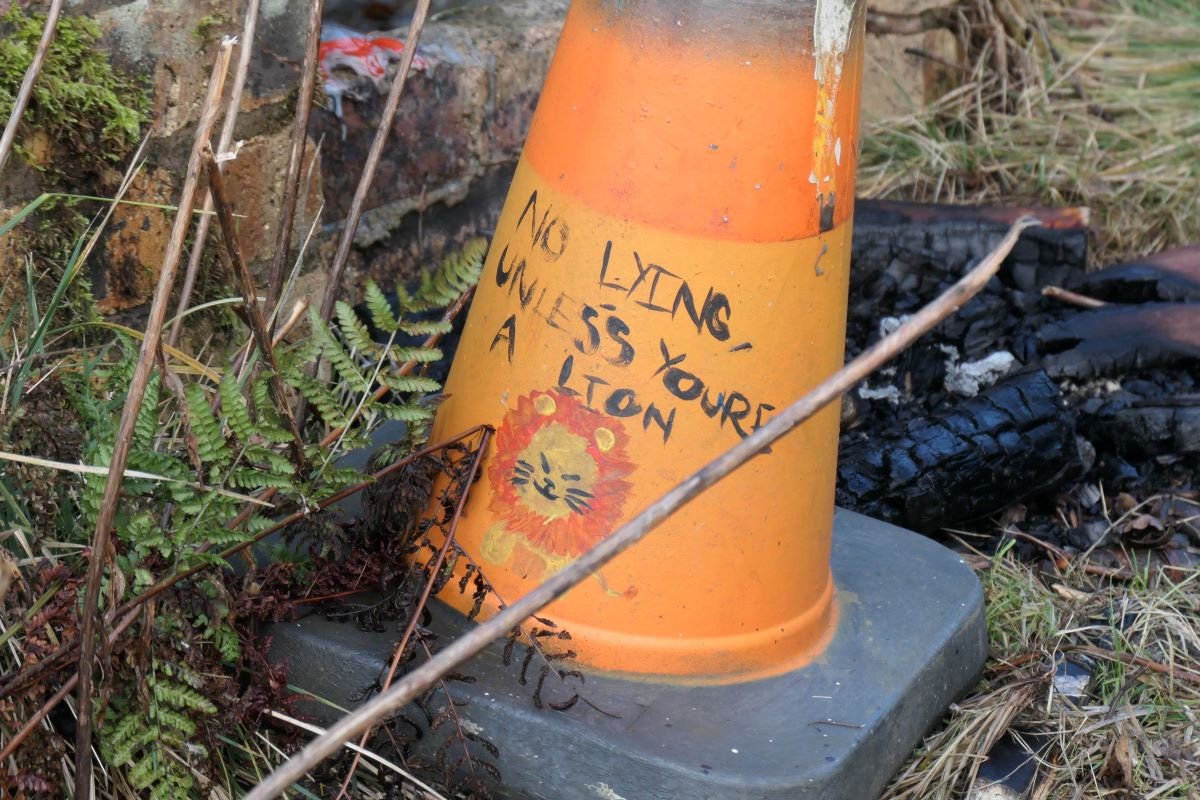
The magic shed, 8th January 2023

The magic shed, 8th January 2023
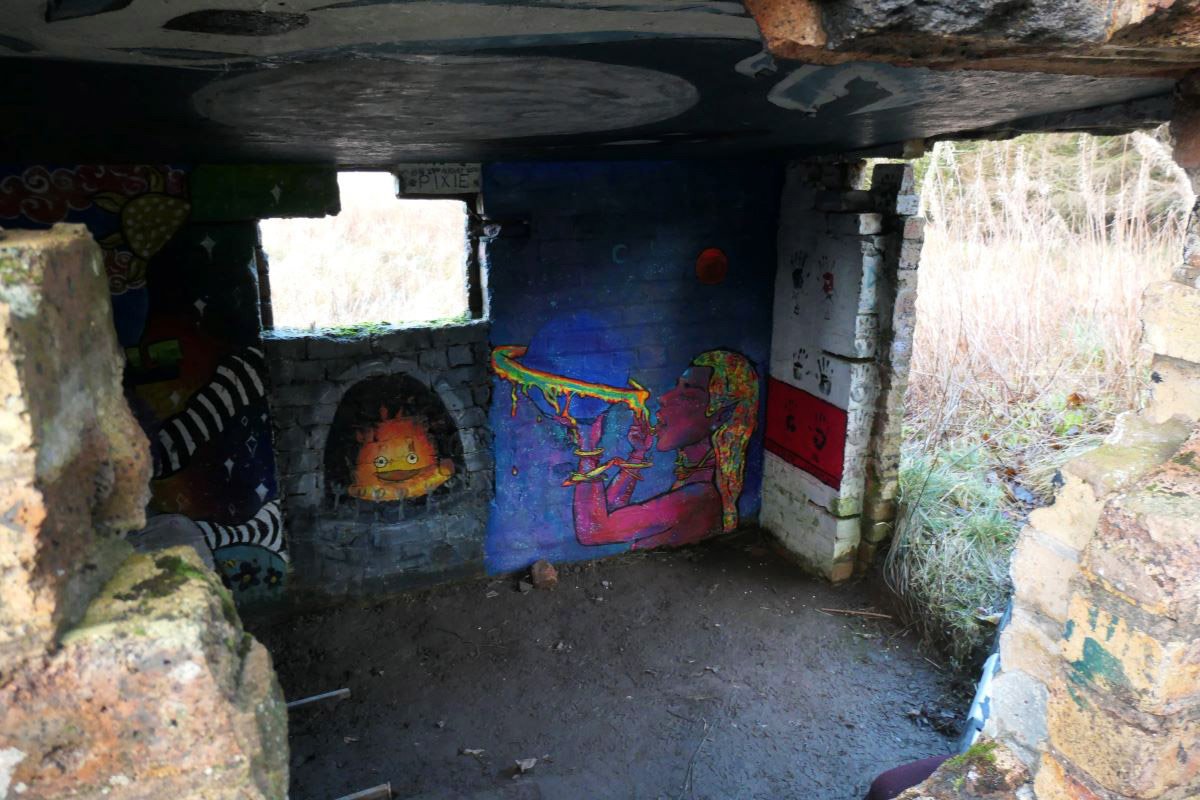
The magic shed, 8th January 2023

The magic shed, 8th January 2023

The magic shed, 8th January 2023

The magic shed, 8th January 2023

The magic shed, 8th January 2023

The magic shed, 8th January 2023
We now understand that this art is the work of Jodie Neil, and was a project during the first Covid lockdown. Jodie, you're a star, thanks for brightening our day.
